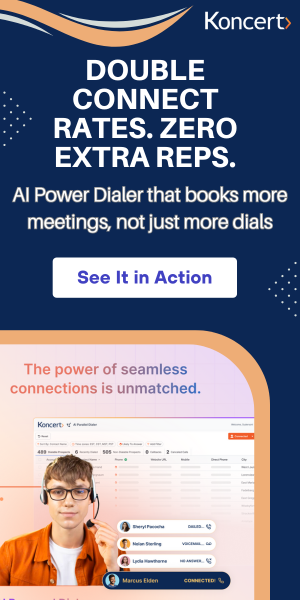A Sales Communication Platform is a unified toolset that enables sales teams to manage, streamline, and optimize their communication with prospects and customers across multiple channels—phone, email, SMS, video, and chat. These platforms integrate with CRM systems and provide tools for real-time messaging, analytics, scheduling, and automation. They enhance collaboration, ensure message consistency, and support data-driven sales engagement strategies at scale.
Benefits of a Sales Communication Platform
Unified Messaging Channels
Brings together all communication methods in one interface, reducing tool-switching and boosting rep efficiency.
Consistent Branding and Messaging
Ensures all outbound communications adhere to brand tone and sales messaging guidelines.
Improved Prospect Engagement
Enables timely, personalized interactions that lead to higher response and conversion rates.
Stronger Team Collaboration
Facilitates real-time sharing of updates, notes, and performance feedback between sales reps and managers.
Analytics and Insights
Tracks communication metrics to help teams understand what strategies work best across channels.
CRM Integration
Automatically logs conversations and updates records, reducing administrative tasks and improving data accuracy.
Best Practices for Communication Platforms
Develop Communication Cadences
Create structured outreach cadences that mix email, calls, and messages to maintain engagement.
Use Templates Wisely
Employ pre-approved templates to ensure consistency while leaving room for personalization.
Train Reps on Platform Features
Provide thorough onboarding and ongoing education so reps can fully leverage platform capabilities.
Monitor Communication Metrics
Regularly analyze KPIs such as response rates, open rates, and call durations to refine tactics.
Segment Your Audience
Customize messaging and outreach strategies based on audience roles, industries, and buying stages.
Ensure Compliance
Follow regulations such as GDPR and TCPA, using platform tools for consent management and opt-outs.
How to Implement a Sales Communication Platform
Assess Needs and Objectives
Identify communication pain points and determine what features and integrations are most critical.
Choose the Right Solution
Evaluate platforms based on scalability, integrations, support, ease of use, and user feedback.
Plan the Rollout Strategically
Start with a pilot group, gather feedback, and refine workflows before full-scale implementation.
Integrate with Existing Tools
Ensure seamless integration with CRM, marketing automation, and dialer systems for full functionality.
Train Sales Teams Thoroughly
Conduct in-depth training sessions to ensure user adoption and alignment with your sales process.
Track, Analyze, and Improve
Use built-in analytics to track outcomes, identify improvement areas, and adjust communication strategies accordingly.
Use Cases of Sales Communication Platforms
Outbound Prospecting
Helps SDRs conduct outreach across channels efficiently with automation and tracking.
Follow-Up and Nurturing
Assists AEs in maintaining engagement with prospects over long sales cycles using consistent touchpoints.
Cross-Functional Collaboration
Enables smoother handoffs between marketing, sales, and customer success through shared visibility.
Performance Coaching
Provides insights and recordings that managers can use to coach reps on communication effectiveness.
Event and Webinar Outreach
Supports pre- and post-event engagement campaigns, improving attendance and conversion.
Multi-Channel Sales Strategy
Powers integrated strategies using voice, video, email, and messaging to meet buyers where they are.
Challenges of Sales Communication Platforms
Adoption Resistance
Some teams may resist transitioning from familiar tools to a new unified platform, affecting adoption.
Data Overload
With extensive metrics, teams may struggle to focus on the most actionable insights without proper training.
Integration Gaps
Inadequate syncing with other sales tools can create workflow disruptions and data silos..
Over-Automation Risks
Excessive automation can reduce personalization and hurt engagement if not carefully managed.
Training Requirements
Platforms with extensive features may require significant onboarding and support investments.
Regulatory Compliance
Ensuring all communication adheres to regional privacy and outreach laws can be complex without proper configuration.
Related Posts
10 min read
High-Quality Outreach - Why Koncert's ZigZag Dialing® Replaces Call Blasting
Dec 12, 2025 by Koncert Marketing
13 min read
7 Outbound Sales Trends for 2026 - AI, Latency, & Max Connect
Dec 4, 2025 by Koncert Marketing




